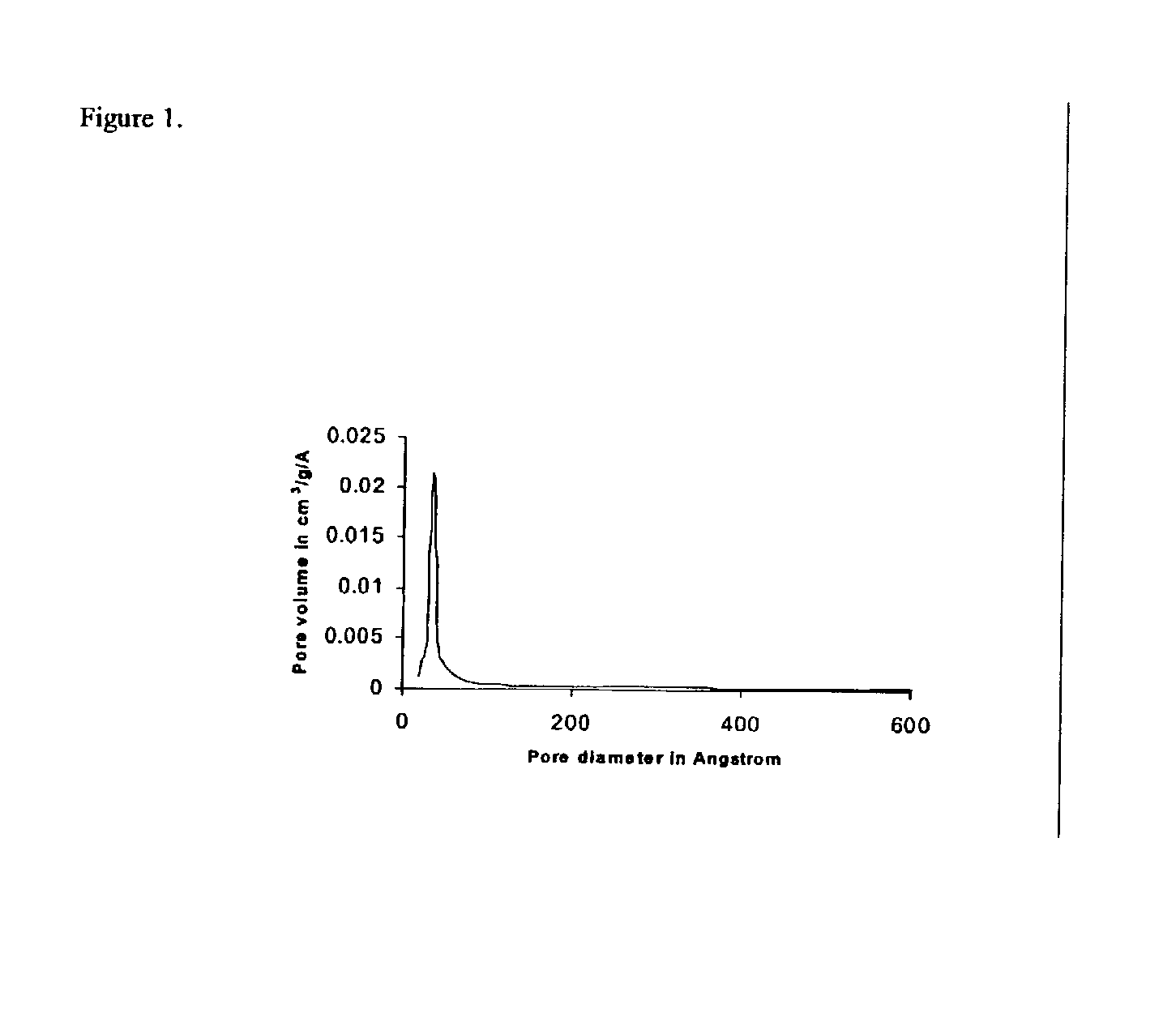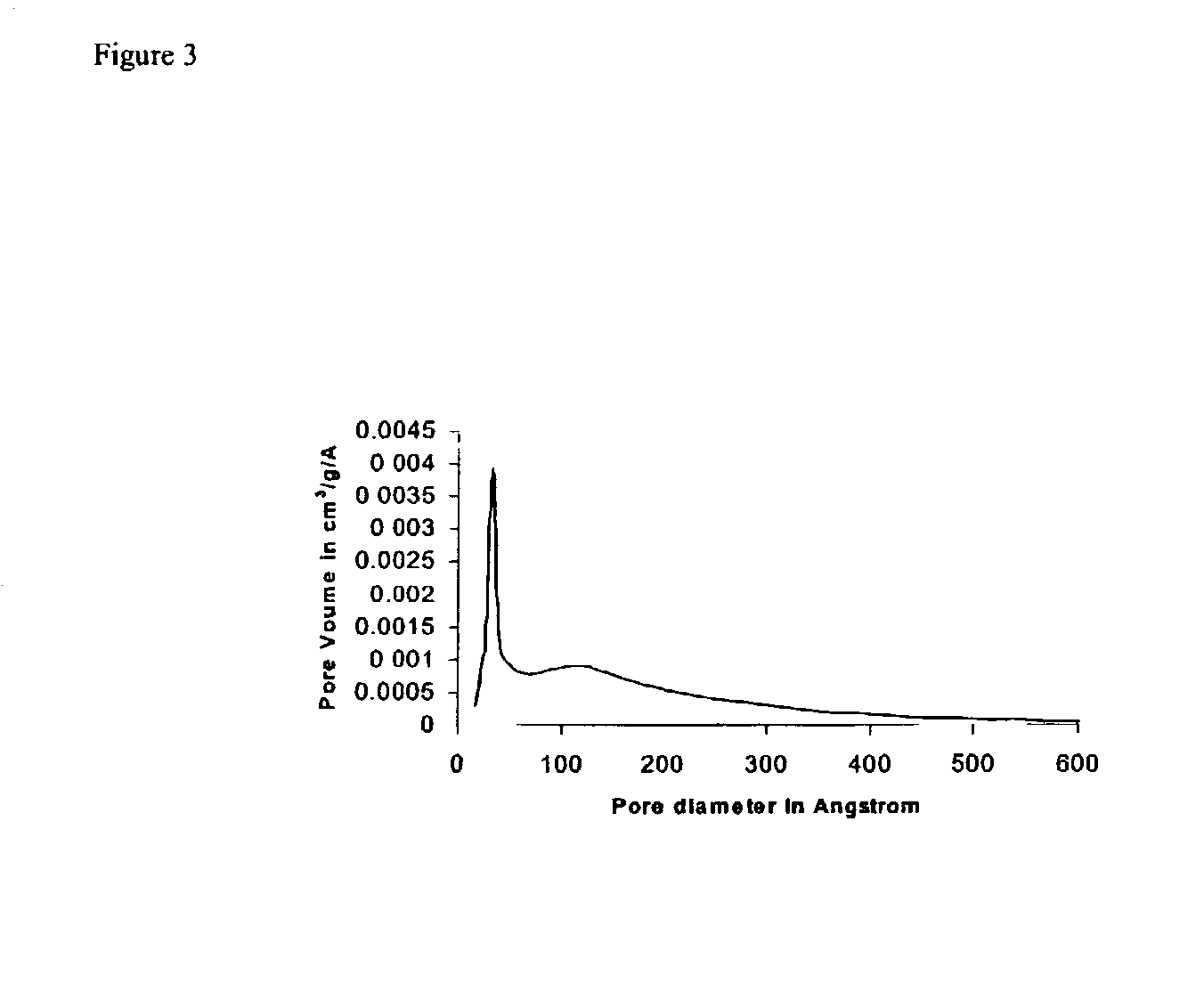Catalyst and method for the alkylation of hydroxyaromatic compounds
- Summary
- Abstract
- Description
- Claims
- Application Information
AI Technical Summary
Benefits of technology
Problems solved by technology
Method used
Image
Examples
example ii
[0034] Catalyst preparation in accordance with the invention using magnesium reagent.
[0035] 10 grams of magnesium carbonate was mixed with 5 grams of wax using a high speed sheer blender for 10 minutes. The blending process was carried out under liquid nitrogen in order to ensure homogeneous mixing. The resulting blend was calcined at 400.degree. C. under continuous flow of air for 6 hours.
example iii
[0036] (Control)
[0037] Under this example the same process as that under Example I above was followed except that the catalyst precursor was simply magnesium carbonate precursor without the pore modifier.
[0038] Around 300 miligrams of calcined samples obtained following Examples I to III was subjected to surface area and porosity measurement using Micromeritics 2010 analyzer. The pore size distributions were obtained from the nitrogen desorption isotherm. The figures show pore size distribution of magnesium oxide obtained after treatment with 10 wt % of wax (Example I, FIG. 2) and 50 wt % of wax (Example II, FIG. 3) and magnesium oxide catalyst not containing an additional pore former (Example III, FIG. 1). The data demonstrate the bimodality developed by hydrocarbon wax treatment under Examples I & II and the large pore size obtained following the above process of the invention. A high proportion of larger pores with a diameter in the range of about 130 .ANG. was obtained at low co...
example iv
[0039] Catalyst preparation in accordance with the invention using iron reagent. Iron oxide catalyst was obtained by room temperature precipitation from aqueous solution containing iron nitrate, chromium nitrate and sodium silicate with aqueous solution of ammonia (1:1) at pH=7. The precipitate was washed with water to remove nitrate ions and subsequently impregnated with potassium carbonate solution. This catalyst was dried at 120.degree. C. followed by calcination at 470.degree. C. under a continuous flow of nitrogen.
PUM
| Property | Measurement | Unit |
|---|---|---|
| Percent by mass | aaaaa | aaaaa |
| Percent by mass | aaaaa | aaaaa |
| Angle | aaaaa | aaaaa |
Abstract
Description
Claims
Application Information
 Login to View More
Login to View More - R&D
- Intellectual Property
- Life Sciences
- Materials
- Tech Scout
- Unparalleled Data Quality
- Higher Quality Content
- 60% Fewer Hallucinations
Browse by: Latest US Patents, China's latest patents, Technical Efficacy Thesaurus, Application Domain, Technology Topic, Popular Technical Reports.
© 2025 PatSnap. All rights reserved.Legal|Privacy policy|Modern Slavery Act Transparency Statement|Sitemap|About US| Contact US: help@patsnap.com



